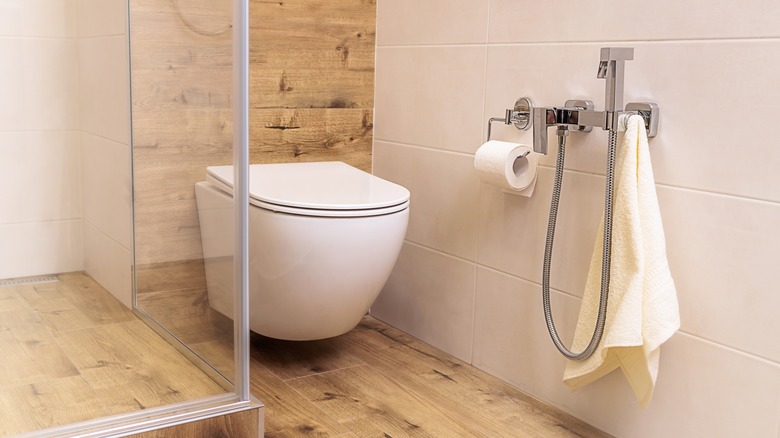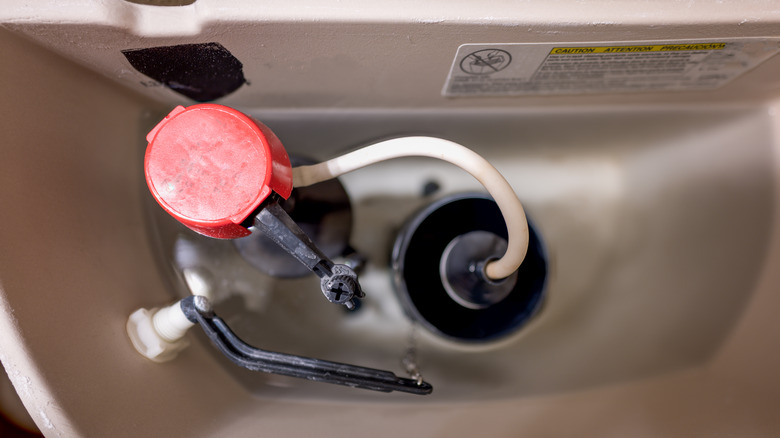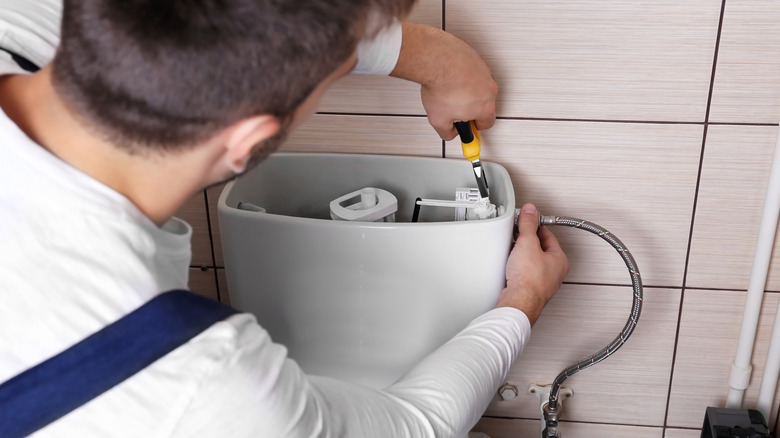Why Your Toilet Is Making A Whistling Sound After Flushing And How To Fix It
Does the flush time in your household equate to a concert, courtesy of your toilet making a high-pitched whistle? Your bathroom isn't haunted, and no phantom roommate has moved in. Often, a clogged or damaged toilet fill valve is the primary offender. Think of this component as an unsung hero who suffers in silence, braving the steady onslaught of water until things go awry. The good news is you can keep that toilet concerto from turning into a full-blown opera with a few simple measures. If the problem stems from dirt or debris, thorough toilet cleaning might be all you need to restore the valve's performance and silence the whistling. But should the symphony persist, a toilet fill valve replacement is in order.
It's easy to dismiss a toilet whistling sound as a mere inconvenience or even an amusing quirk. However, like a car with an offbeat timing belt, or a watch that's always a minute fast, your whistling toilet isn't merely an idiosyncratic bathroom companion. It's a water guzzler in disguise, a wailing siren signaling a disturbed valve doing more harm than good. This humdrum whistle could add unnecessary decibels and dollars to your life when left unchecked. But why spend on plumbing services when you can take command and become the maestro of your noisy porcelain throne? So, put on your DIY hat, grab your toolbox, and embark on the mission to silence that sonorous latrine.
The mystery of whistling flushes and fill valves
A toilet fill valve labors away beneath the lid of your toilet tank, thanked by none. It opens when you flush to allow water to flow into the cistern. Once the tank is filled, the valve closes to prevent overflowing. It's a smooth operator — quiet, efficient, and practically invisible until something nudges it off course. A key telltale is a whistling sound — not the most musical aspect of home care rituals, right? Mineral deposits or deteriorated valve pieces could be the suspect behind the concert every time you flush. As for a ballcock-style fill valve, check for a worn-out gasket vibrating with the valve assembly.
But is a whistling toilet dangerous? Generally speaking, it's not a matter of endangerment so much as a minor annoyance. And what happens if you don't fix a whistling toilet? While squealing might initially be as harmful as shower singing, it can signify impending issues. This could manifest in higher water bills due to inefficient water use. So, think of it less as a danger and more as a plea for help from your toilet.
How do you fix a whistling toilet flush?
A good scrub with vinegar and an old toothbrush should dislodge mineral deposits from their unwelcome residence. Finishing off the cleaning with warm soapy water ensures any stubborn stragglers are evicted, and a rinse of fresh water ensures a sparkling finale. And if the toilet still insists on assembling the whistling orchestra despite your best cleaning efforts? Like a weary-hearted character in a dramatic play, the part has lived its course, and now it's time for a change — a fresh lead waiting backstage.
Begin the fill valve replacement by shutting off the water supply to the toilet. Next, flush the toilet and sponge any residual water in the cistern. You can now disconnect the water supply line attached to the fill valve and unscrew the locknut on the underside of the toilet tank to free the fill valve. Afterward, equip the newcomer with a rubber washer supplied with the toilet fill valve replacement kit. To install the replacement, ease the threaded shank into the hole at the tank's base. Adjust the valve height based on the tank size and water line etched within, then tighten the locknut in a clockwise direction. Afterward, reconnect the water supply pipe, attach the overflow tube to the new fill valve, turn on the water supply, and let the cistern fill. Then, test the flush for noiseless operation. If harmony is achieved, calibrate the water level to an appropriate height and mount the toilet lid.


